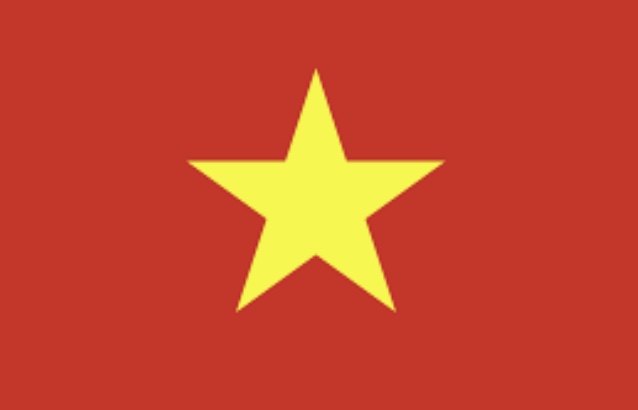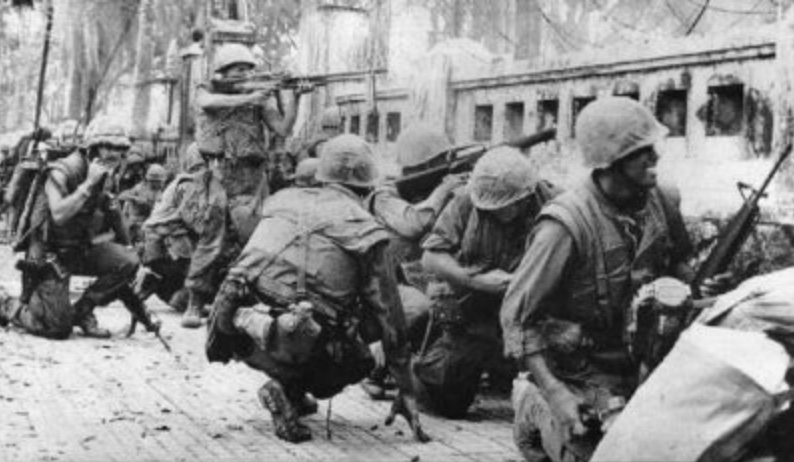The Wars of Vietnam: From the Beginning of the 20th Century to the Present

How many wars has Vietnam fought? This question comes up often, but for most Americans, the conflict known as “The Vietnam War” is the only one that comes to mind. Vietnam has fought many conflicts, from colonial uprisings against the French, to more recent issues with China.
This page lists the wars and conflicts of the nation of Vietnam. Included are the rebellions and uprisings against the colonial French rulers, the conflicts involving both North and South Vietnam as well as the conflicts fought by a united Vietnam after 1975.

De Tham Guerrilla Resistance—1883-1913 —De Tham, a Vietnamese resistance leader, led a thirty-year guerrilla campaign against the colonial French occupiers in the mountains near Yen The in northeastern Tonkin. In 1909 the French launched a major offensive against his forces. De Tham was involved in the 1908 Hanoi Uprising.
This guerrilla resistance ended with De Tham’s assassination in 1913.
Hanoi Uprising —June 1908—“Abortive” uprising led to French execution of thirteen rebels and hundreds of arrests.
Vietnamese Troop Mutiny—1916— 16 year-old Vietnamese King Duy Tan took part in revolt and was exiled to the French island of Reunion. In their policy of colonial control, the French allowed the Vietnamese monarchy to exist as a puppet government. As with most colonial empires, the French recruited local forces to aid them. In this case, the Vietnamese troops mutinied against their rulers.
Thai Nguyen Uprising—1917-–As in the previous year’s mutiny, Vietnamese troops rebelled in the province of Thai Nguyen and held the town of Thai Nguyen for several day before the French put down the rebellion and recaptured the town.
The Nghe-Tinh Revolt—1930-1931—A peasant revolt with backing and support from the underground Vietnamese Communist Party. French forces suppressed the local soviets (A soviet is a council of peasants, workers or soldiers in a socialist or revolutionary form of government) which formed in local villages. Many of these revolutionaries were arrested and at least 80 were executed by the colonial government.
Yen Bai uprising—Feb. 9, 1930 A rebellion launched by the Viet Nam Quoc Dan Dang, (VNQDD — Vietnamese Nationalist Party) began as a planned mutiny of Vietnamese troops in the Yen and Bai garrison. Other attacks on Son Tay and Lam Thu failed. The French suppressed the uprising, arresting executing many VNQDD leaders. Several villages were bombed and shelled by French forces.
World War II—During the Second World War, while France was defeated and partially occupied by Germany in 1940, both Japan and her ally Thailand initiated border conflicts with the French colonial forces in Vietnam and Indochina.
Franco-Japanese Border War (Sept. 22, 1940-Sept. 24, 1940)—Soon after France fell to Germany, Japan sought passage through French Indochina in order to attack Nationalist Chinese forces near the border. French authorities in Hanoi refused, prompting Japan to launch a ground attack on the French border forts at Long-Son and Dong-Dang. Two days later, Japanese aircraft bombed the port city of Haiphong and the Japanese navy landed troops at the port. During the two days of fighting, nearly 800 French troops were killed.
Franco-Thai Border War (Jan. 9, 1941-Jan. 28, 1941)–-Thailand, then an ally of Japan, initiated an invasion of French Indochina after early border skirmishes from November 1940. After early successes, the Thai forces were forced back by French reinforcements. At sea, the French navy, in the form of one cruiser, wiped out nearly one third of the Thai navy off the island of Kho Chang on Jan. 17. Japan arranged a cease-fire on Jan. 28. Per a written agreement signed on March 11, France gave portions of Laos and Cambodia to Thailand.
Viet Minh Resistance to Japanese Occupation (1944-1945)–– In late 1944, the Vietnamese Communists, led by Ho Chi Minh and Vo Nguyen Giap, initiated a resistance movement against the Japanese. The Viet Minh (Vietnamese abbreviation for ” League of the Revolution and Independence of Vietnam”) sought independence from both Japan and France.
First Indochina War–1945-1954—Vietminh guerrilla war against the French culminating in the Viet Minh victory at Dien Bien Phu.
Binh Xuyen Suppression –April, 1955—The South Vietnam government of Ngo Dinh Diem used military action to eliminate the paramilitary power of the Binh Xuyen criminal organization.
Hoa Hao Suppression –June, 1955—The South Vietnam government of Ngo Dinh Diem used military action to eliminate the paramilitary power of the Hoa Hao religious sect in the countryside around Saigon.
Cao Dai Suppression –1955—The South Vietnam government of Ngo Dinh Diem used military action to eliminate the paramilitary power of the Cao Dai religious sect.
North Vietnamese Peasant Uprisings of 1956—A peasant uprising in opposition to the Communist government’s policy of forcing the rural population into collective farms. The government put down the revolt.
Second Indochina War–1956-1975––The so-called “Vietnam War” was really a regional and international conflict involving not just North and South Vietnam and the U.S. but also embroiling Laos, Cambodia, Thailand, South Korea, Australia and New Zealand. Below are some of the “smaller” conflicts that in part made up the Second Indochina War.
The American-Vietnamese War– 1956-1975—The Communist North Vietnamese and the southern Viet Cong engaged in a long war to overthrow the pro-American government of South Vietnam. The U.S. and other allied nations sent troops to aid the Saigon regime. The last U.S. combat troops left in 1973 and Saigon fell to the North Vietnamese on April 30, 1975. Known in the U.S. and much of the world as “The Vietnam War.” Known in Vietnam as “The American War.”
Anti-Diem Coup Attempt– Nov. 11-Nov. 13, 1960—Bloody coup attempt against South Vietnam’s leader, Diem. Over 300 killed or wounded. Diem would later be overthrown and murdered in late 1963.
Laotian Civil War– 1959-1975—North Vietnam sent large numbers of troops into Laos to aid the Communist Pathet Lao against the U.S.-backed Royal Laotian government. The Pathet Lao seized power in 1975 and maintains a good relationship with Hanoi.
Cambodian Civil War– 1967-1975—North Vietnam sent large numbers of troops into Cambodia to aid the Communist Khmer Rouge against the U.S.-backed Cambodian government. The North Vietnamese Army (NVA) had maintained a large presence in eastern Cambodia for years prior to the beginning of the Khmer Rouge war in 1967. Following the fall of the U.S.-backed governments in Cambodia and South Vietnam, the two former Communist allies engaged in warfare between themselves. (See below).
Paracel Islands Battle (Jan. 19-20, 1974)-Two-day naval and ground battle in the disputed Paracel Islands in the South China Sea between South Vietnamese forces and military forces from the People’s Republic of China. The islands had been in Vietnamese hands since the end of French rule in 1954, but in 1974, China sent ships and troops to the islands. In January, 1974, South Vietnamese forces, with an American advisor, landed on the islands. A battle ensued between Chinese and South Vietnamese naval ships, while soldiers from the two countries fought on the islands. The South Vietnamese fled, leaving the Chinese in possession of the islands. Chinese losses included: 18 killed, 67 wounded, and 4 minesweepers damaged. South Vietnamese losses included: 53 killed, 16 wounded, 48 captured, 1 corvette sunk, and 3 frigates damaged. The American advisor, Gerald Emil Kosh, was also captured. Kosh and several of the Vietnamese troops were released later in the month.
Post-Unification Southern Resistance–1975-mid-1980s—Armed resistance by several groups against the Communist Hanoi government following the fall of Saigon in 1975. These groups include: the Montagnard ethnic group in the Central Highlands; the Cao Dai and Hoa Hao religious groups (who reportedly ceased fighting in the mid-1980s); and various anti-communist groups collectively known as chu quoc or “national salvation.” The chu quoc included the Dai Viet and the Viet Nam Quoc Dan Dang, two armed nationalist (and therefore anti-communist) organizations and soldiers from the old South Vietnamese Army (ARVN).
The Montagnard resistance ended in 1987 as the government and the Montagnards came to an accomodation regarding the degree to which the central government would interfere, or not interfere, with life in the highlands.
The Cao Dai and Hoa Hao religious sects, offered up stiff resistance in Chau Doc an Tay Ninh Provinces, where these groups primarily live, but, like with the Montagnards, the resistance tapered off in the mid-80s due to accomodations allowed for these religious groups.
Hmong Rebellion in Laos—1975-Present—Armed resistance by the Hmong ethnic group against the Communist Pathet Lao government is really just a continuation of the fighting between the Pathet Lao and the Hmong, who were armed and supported by the United States in the Laotian Civil War. The Hmong claim that the Vietnamese army is fighting them in support of the Laotian government.
Third Indochina War–1977-1991—The Third Indochina War began with the conflict between the Khmer Rouge government of Cambodia and the Communist government of a united Vietnam. Partially as a result of Vietnam’s invasion of Cambodia (a Chinese ally) in late December of 1978, China launched what it described as a “punitive” attack on northern Vietnam. This 29-day war ended with the bloodied Chinese army declaring victory and returning home.
Cambodia-Vietnamese War—1977-1991–-During their war against the U.S.-sponsored regimes in Saigon and Phnom Penh, the North Vietnamese and the Khmer Rouge were able to mask their ideological differences and ignore the historical hostility between their two peoples. After taking power though, these differences turned violent. Beginning with low-level cross-border raids and escalating into full-fledged war in late December of 1978 when Vietnam launched a massive conventional invasion of Cambodia, swiftly occupying the nation within days. Vietnam set up a new government in Phnom Penh with Khmer Rouge defectors but found itself immersed in a long and difficult war of occupation as the Khmer Rouge returned to the guerrilla warfare they knew so well. Vietnamese troops left after more than a decade, with the friendly government of Heng Samrin in control of most of Cambodia.
Sino-Vietnam War—Feb. 17-Mar. 16, 1979— Similar to the difficulties between Cambodia and Vietnam, the Hanoi regime enjoyed good relations with China during the war against the United States and South Vietnam, but once that conflict ended, ideological and historical differences interfered with Sino-Vietnamese relations. Using the Vietnamese invasion of Cambodia as a pretext, China launched a massive attack along their common border. Vietnam’s border troops put up a very good defense, causing major casualties to the Chinese People’s Liberation Army (PLA). Within a month of the invasion, China basically declared that it had taught Hanoi a lesson and withdrew. Results of this war include: moving Hanoi closer to the Soviet Union, which was a rival of China; a modernization of the PLA as China realized they did not do very well against a smaller country; and the beginning of a long-lasting but low-level border conflict between Vietnam and China. (See below).
Sino-Vietnam Border Conflict–1980-1991— After the Chinese invasion of Vietnam in 1979, continued warfare and infiltration along the border kept these two neighbors in a state of low-level warfare which resulted in thousands of battle casualties on both sides. The two Communist neighbors began to maintain cordial relations, for several years in the 1990s, but in the 21st Century, the two communist neighbors have engaged in diplomatic arguements over who controls resource-rich islands and areas of the South China Sea. Vietnam increasingly is engaging in more cooperation with the United States to counter Chinese influence in the region.
Spratly Island Clash– (March 14, 1988)-Chinese and Vietnamese forces battled over control of the Spratly Islands when Vietnam sent two armed transport ships and a landing craft carrying around 100 People’s Army of Vietnam soldiers to Johnson South Reef, Collins Reef, and Lansdowne Reef in the contested Spratly Island chain. In response, Chinese naval ships and ground troops went to the islands and confronted the Vietnamese soldiers on Johnson South Reef. Chinese and Vietnamese ships exchanged fire and the heavily outgunned Vietnamese vessels were sunk, leaving 64 Vietnamese soldiers dead and 11 wounded. The Chinese forces, which suffered only one wounded casualty, captured nine Vietnamese troops who were later released. China still maintains control of the islands.
Thai-Vietnam Border Conflict–1980-1990—Following the Vietnamese invasion of Cambodia, Vietnamese forces often crossed over from Cambodia into Thailand in operations against Cambodian guerrilla forces. This led to several battles with the Thai military.
Sources on Vietnamese History and Vietnamese Wars:
O’Ballance, Edgar The Wars in Vietnam: 1954-1980. New York: Hippocrene Books. 1981.
Fall, Bernard B. Street Without Joy. New York: Schocken Books. 1972.
Thompson, Sir Robert.WAR IN PEACE: Conventional and Guerrilla Warfare Since 1945. Harmony Books; 1st U.S. ed edition. 1985.
